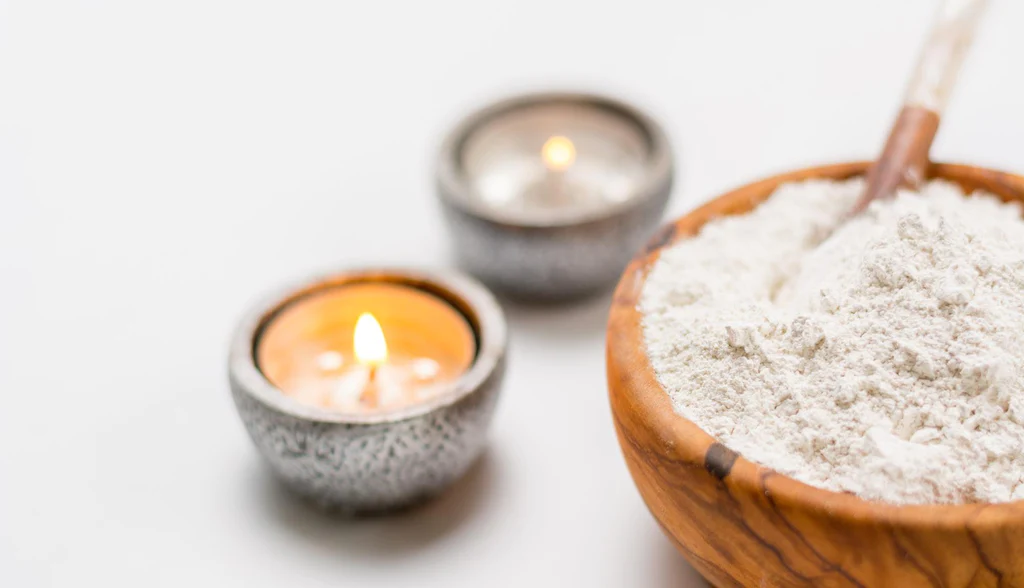5 types of commonly used surface modifiers for kaolin clay

After surface modification, kaolin powder can be hydrophobic, reduce surface energy, improve its dispersion and compatibility with polymer base materials, so as to improve the comprehensive performance of polymer base composite materials such as plastics and rubber.
At present, the main modification method of kaolin is surface chemical modification. Commonly used surface modifiers mainly include silane coupling agents, organic silicon (oil) or silicone resin, surfactants and organic acids.
1. Commonly used surface modifiers for kaolin clay
(1) Silane coupling agent
Silane coupling agent is the most commonly used and effective surface modifier for kaolin fillers. Since R of the silane coupling agent is an organophilic group, calcined kaolin can be compatible with organic matrices such as rubber and plastics after surface modification. . When modified kaolin is used as a filler in rubber, the R group will react with the rubber macromolecules during the vulcanization process, so that the kaolin molecules are completely dispersed and integrated into the rubber matrix molecules.
The treatment process using silane coupling agent is relatively simple. Generally, kaolin powder and prepared silane coupling agent are added into the modification machine for surface coating treatment. The process can be carried out continuously or in batches.
The factors that affect the final treatment effect are mainly the particle size, specific surface area and surface characteristics (surface functional groups and activity) of kaolin powder, the type, dosage and usage of silane coupling agent, the performance of modification equipment and the time and temperature of surface modification treatment. wait.
(2) Silicone oil
In addition to silane coupling agents, kaolin used as fillers for wires and cables (such as polyvinyl chloride) is often surface modified with 1%-3% silicone oil. The modification process and equipment are similar to those using silane coupling agents.
Calcined kaolin powder treated with silicone oil is used as a filler for wires and cables. It can not only improve the mechanical and physical properties of the cable, but also improve or enhance the electrical insulation and hydrophobic properties of the cable, and the electrical insulation properties in humid and cold environments. Significant improvement.
(3) Unsaturated organic acids
Unsaturated organic acids, such as oxalic acid, sebacic acid, dicarboxylic acid, etc., can also be used to modify the surface of aminated kaolin powder. This modified kaolin can be used as filler for nylon 66, etc.
(4) Cationic surfactant
For example, octadecylamine can also be used for surface modification of kaolin powder. Its polar groups interact with the surface of kaolin particles through chemical adsorption and physical adsorption. The surface hydrophobicity of kaolin modified by organic amines is enhanced.
(5) Inorganic surface modifier
Titanium dioxide, calcium carbonate, calcium sulfate, etc. can also be used for surface modification of calcined kaolin. The modification method is a surface precipitation reaction in an aqueous solution. After the modified product is washed, filtered and dried, calcined kaolin with a titanium dioxide coating on the surface is obtained.
2. Selection principles of kaolin surface modifiers
The type, dosage and method of use of surface modifiers directly affect the effect of surface modification. Different uses require different types and formulas of surface modifiers.
If we only consider it from the perspective of the interaction between surface modifier molecules and the surface of inorganic powder, of course the stronger the interaction between the two, the better. However, in actual operation, the cost and cost of the modified product must also be considered comprehensively. Application purpose and other factors.
For example, when calcined kaolin is modified and used as a filler for cable insulation rubber and plastics, the dielectric properties and volume resistivity of the surface modifier need to be considered;
If modified kaolin is used as a reinforcing filler for rubber, when selecting a modifier, not only the bonding strength between the modifier and kaolin must be considered, but also the bonding strength between the modifier molecules and the rubber macromolecules. , only when both of them are optimized can the surface modifier have the best modification effect.
For specific application purposes, it is sometimes necessary to use two coupling agents for mixed modification. Utilizing their synergistic effect for modification will achieve unexpected good results. However, attention should be paid to the use method and order of addition of the two modifiers. .
